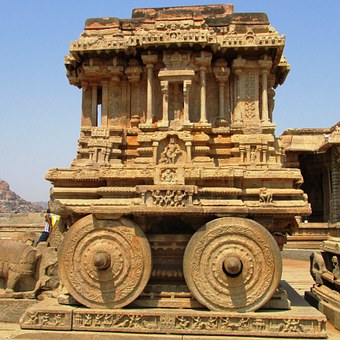Hello From London, London's Unknown East End & A Tour Of The Zetter Hotel

Its amazing what you can pack into a day: our sightseeing tour on the Number 11 bus had introduced us to some of Londons most important sights
. During our walking tour we explored Buckingham Palace, the Mall, Trafalgar Square and Whitehall, arriving just in time for Big Ben ringing in the noon hour. Then we took a sightseeing tour on the Thames River and got to know the city from a completely different perspective. With only three days in London we were trying to cover as many sights as possible, and so far on our second day we had definitely managed to squeeze in a lot of important landmarks.After rushing to catch the Docklands Light Railway to our meeting point at Whitechapel, we connected with our walking tour a bit late, but we were ready to get to know Londons unknown East End. The tour was led by Harry Jackson, a passionate Londoner who grew up in Liverpool in the 1960s. Harry moved back to London in 1973 and gained extensive knowledge of the city during the 1980s when he worked for London Transport. This was also the time when he became a certified Blue Badge tourist guide. Blue Badge guides go through a two year training program at the Institute of Tourist Guiding and provide reliable and professional guiding services all over the UK. We joined the tour a bit late, and Harry was already in full swing, enthralling a curious crowd of about 20 people.
In a city with so many diverse and historic areas, Londons East End is one of the most fascinating neighbourhoods. Part of the area was used as graveyards during Roman times, and during the Middle Ages villages started to sprout up east of the medieval walled City of London. From the beginning many noxious industries were located here: from tanneries to breweries, foundries, gun powder factories and bone processing facilities to make soap and china, the East End attracted many dangerous and unpleasant industries.
People from the countryside started flocking into this area, and successive waves of immigrants also started to call the East End their home. In the late 17th century large groups of French Huguenots, Protestant refugees from France, set up shop here and started many silk-weaving businesses. Irish Weavers came shortly after, and in the latter half of the 19th century Ashkenazi Jews fleeing the pogroms of Tsarist Russia settled in this area. Many local residents started working in the docks and shipyards in the east side of London. The most recent population influx stems from a large number of Bangladeshi immigrants who have called this area their home.

In his well-spoken and entertaining manner, Harry showed us some sites connected to the famous Jack the Ripper, an unidentified serial killer who is thought to have been responsible for eleven murders in Londons East End in late 1888. In rather gruesome details he started telling us about some of these horrific crimes, most of which were committed against prostitutes whose throats were slit and whose bodies subsequently were brutally mutilated and eviscerated.
During the late 19th century the East End of London was a cesspool of poor or homeless people who suffered from highly exploitive work conditions. Prostitution and street crime were rampant. The series of Whitechapel Murders terrified the local population, received extensive coverage in the local press and became the stuff of legends and urban myths. Due to the anatomical knowledge applied in the murders, one theory supposed that Jack the Ripper was a medical doctor. Despite the fact that in some cases police arrived on scene just minutes after the crime, the perpetrator was never found.
At a stop at the local Royal London Hospital, Harry filled us in on the story of another colourful personality related to Londons East End: Joseph Carey Merrick, better known as "the Elephant Man". Born in 1862 he suffered from severe facial disfigurements that left him no other choice than to work in a sideshow once he became an adult. Harry pointed out that Merrick worked in a sideshow in a local Whitechapel shop, but decided to go to Belgium in 1886 where he ended up being mistreated, and most of his earnings were stolen by the man who ran the show.
Prior to leaving for Belgium, Merrick had obtained the business card of a local surgeon who was working at the Royal London Hospital. Dr. Frederick Treves, who was later knighted, took a liking to the Elephant Man, and after Merricks return from Belgium, he arranged for him to get permanent living quarters at his hospital where Merrick lived until his premature death in 1890 at only 27 years of age.
As we walked through the narrow streets of Whitechapel Harry also showed us different locations that were hotbeds of political activism and anarchism in the late 19th and early 20th century. Based on its working class roots, Londons East End had had a long history of social activism and labour organization. Even as early as after the arrival of the Huguenot weavers in the late 1600s, reading clubs were established that morphed into labour and political organizations.
Subversive actions culminated with the radicalism of the late 19th century. Jewish emigrants from Eastern Europe as well as Russian and German radicals congregated in the Whitechapel area. Leon Trotsky and Vladimir Lenin attended meetings here in 1903, and Joseph Stalin participated in the Fifth Congress of the Russian Social Democratic Labour Party which was held in a local church.
Steps away we stopped on Fieldgate Street where we saw the East London Mosque right next door to the Fieldgate Street Synagogue. This Jewish house of worship was founded in 1899 and was rebuilt after sustaining severe damage as a result of German air raids during World War II. The Mosque right next to it was conceptualized in 1910 and serves Londons largest Muslim community, including a large number of Bangladeshi, Somalian and North African members.
We also walked past the Whitechapel Bell Foundry, the oldest manufacturing company in Great Britain. Established in 1570, this company cast Philadelphias Liberty Bell as well as Londons Big Ben. Master founders have existed in Whitechapel since the early 1400s. We also stopped at the remainder of the St. Mary Matfelon Church, a thirteenth century church of which there is nothing left other than a stone outline in a grassy area, the result of a German World War II bombing.
Our last part of the walking tour focused on Brick Lane, a street that was historically the heart of the local brick and tile-making industry in Whitechapel. This is now the centre of the local Bengali community, and dozens of popular curry houses line the street. Brick Lane has become a popular restaurant area, and many artists have started to move into the neighbourhood. Today a street festival was going on, and throngs of people were strolling on Brick Lane.
Harry, our expert guide, pointed out the Brick Lane Jamme Masjid, a mosque that has been operating here since 1976. For more than 260 years this building has been used for religious purposes. Earlier incarnations of the same building include the Spitalfields Great Synagogue of 1898, a Methodist Chapel dating from 1819 as well as La Neuve Eglise, a Huguenot Chapel built in 1742. This house of worship is a perfect example of the transformations of this neighbourhood, a result of the successive waves of immigrants who have settled in Londons East End.
We turned left onto Fournier Street, a street originally inhabited by Huguenot silk weavers who needed the large windows of their 18th century houses to provide sufficient light for their detail-oriented work. The entire Brick Lane area has been undergoing gentrification for the last quarter century, and in some cases local houses are now selling for several million pounds.
At the end of Fournier Street was the final stop of our tour: we stopped at Christ Church Spitalfields, an Anglican Church built between 1714 and 1729. Harry explained that since there was a shortage of churches in the area, the construction of this church was initiated by the Commission for Building Fifty New Churches which had been created by an act of the British Parliament.
Across the street we looked at the Old Spitalfields Market whose buildings date back to 1887. A public market has been in existence here since 1682 and was originally a wholesale fruit and vegetable market. The fruits and vegetables were moved to the New Spitalfields Market in 1991, while the old market today holds various fashion outlets as well as various food and general retailers. Fittingly, Harry finished us off with one final example of a murder by Jack the Ripper which had taken place just around the corner from were we stood.
Enriched with local London knowledge we walked to the Liverpool Street Station from where we caught the Tube back to the Zetter Hotel. Prior to going out for the evening I wanted to get a quick overview of the hotel and requested a tour of the facilities. Raquel Gallego, the Assistant Reception Manager, graciously volunteered her time and took us up to the top floor of this five story hotel. From this level, we were able to enjoy a look down the five-story atrium all the way to the bar on the ground floor.
The Zetter Hotel is a converted Victorian-era warehouse that features 59 uniquely designed rooms of which no two rooms are the same. Rooms range from standard guest rooms to deluxe corner rooms, deluxe twin rooms as well as various categories of rooftop studios. We first went into a top floor studio that featured a queen size bed, a mini-bar and kettle as well as a so-called Raindance shower" and bath. A large flat screen television with 15 satellite channels is available as well as an iPod docking Station. Internet access is complimentary, a feature that I, as a traveling journalist, always enjoy. 4000 music tracks are available free of charge to entertain the guests.
Raquel showed me the rooftop balcony which featured two sitting areas, an ecologically friendly solar lamp, and a great view over Londons rooftops. Then we went to another room and checked out the most popular deluxe rooftop studio: room 503, a favourite destination for honeymooners. It features an oversize rooftop deck with a sitting area, two reclining chairs and a most gorgeous vista of some of Londons greatest landmarks: Londons business district highlighted by the unforgettable shape of the Gherkin, the dome of St. Pauls Cathedral as well as the outline of the London Eye, Londons gigantic Ferris wheel. This is definitely a serene place of respite in the middle of the hustle and bustle of this busy metropolis.
Over a glass of lemon water, Raquel gave me more background about the Zetter and its surroundings. The water itself was actually from the hotels own 100 m deep well which provides a complimentary bottle of still and sparkling water to all hotel guests on a daily basis. The cold water was an excellent refreshment on an unusually warm spring day that featured temperatures in the mid 20s.
We briefly touched on the neighbourhood surrounding the Zetter Hotel: the Clerkenwell area has a great location between the City and the West End. The St. Pancras / Kings Cross tube stations are just one stop away, Liverpool Street Station is two stops away and the heart of Londons financial district, Bank Street, is also just two subway stops away. The neighbourhood itself is very popular with locals and savvy travelers alike as it teems with fashionable restaurants, bars, galleries and dance clubs. Some of the citys best restaurants are located here.
The Clerkenwell area itself has an interesting long-standing history. During the 17th century it was popular as a resort area that featured various spas, tea gardens and theatres. The Industrial Revolution caused the area to change and many breweries, distilleries and printing businesses located here. The post World-War II era brought with it a decline of these industries, but from the 1990s onwards gentrification efforts rejuvenated the area, and it has become a favourite residential neighbourhood for young professionals.

With its ground-floor restaurant and bar, the Zetter Hotel is a popular destination for locals and travelers alike, and many businesses take advantage of its meeting rooms and private dining facilities. Raquel added that because it is a small hotel, the staff is very close-knit and guests are treated like they are part of the family. Based on its style, comfort, quirky personality and its environmental achievements, the Zetter has been awarded Best Small Hotel at the Visit London Awards 2006.
Andrea and I have certainly been enjoying our time at the Zetter, and the location is unbeatable. Since we had to get ready for going out in the evening I thanked Raquel for showing us around this unique hotel. Minutes later we were back on the road to make our way out to Snaresbrook, a suburban area in North East London where we were planning to meet with local friends of Andreas. After an extremely hectic and action-packed day I enjoyed the ride in the subway and the relaxed evening that followed at Debbies house. Together with her family and friends, we spent a nice evening chatting, and over a selection of Indian food, we shared our impressions of these two whirlwind days in London.
Close to midnight we got back and dropped into bed exhausted, ready to rest up for the adventures that were yet to come on our third and last day in London.
by: arther Hello From London, Sunrise Kayaking On Regents Canal Group Shopping In Developing Countries Orlando Beautiful Travel Destination Classic Package for Egypt trips Many Different Kinds Of Halloween Costumes For 2007 Paper For Your Christmas Tree Decor Visit Counter For Top Bloggers Mushroom As They Reach Near Celebrity Status Ways That You Can Become A Celebrity Seeking To Work In Australia The First King of French Chefs Get More Out of Your Holidays to India Revolving Christmas Tree Stand Holidays to Cairo